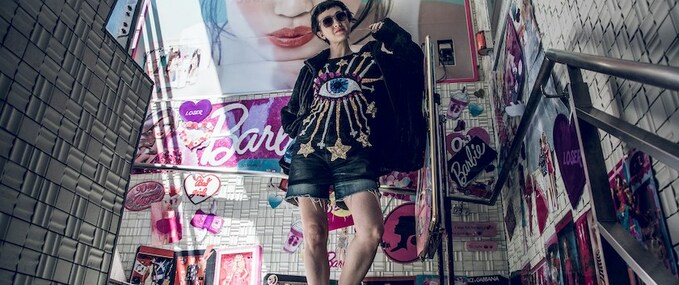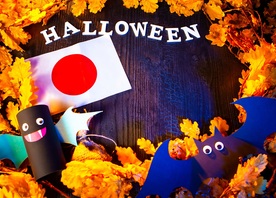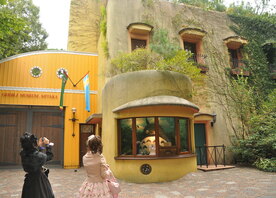Tokyo is one of the coolest, most vibrant, and dazzling cities in the world, but which of its neighbourhoods are the coolest? We’ll tell you here.

Intro
When it comes to being cool, Tokyo has it all. This dazzling, futuristic city is fun, quirky, vibrant, edgy, fast-paced, exciting, and everything in between. It has been setting trends in youth culture for decades and is a city of the future where tomorrow is happening today. In this blog, we’re going to tell you where to go to find Tokyo’s coolest neighbourhoods, the best sights, sounds, and activities in each area, as well as transport tips and more. If you want to be at the cutting edge of Tokyo cool then this is the post for you.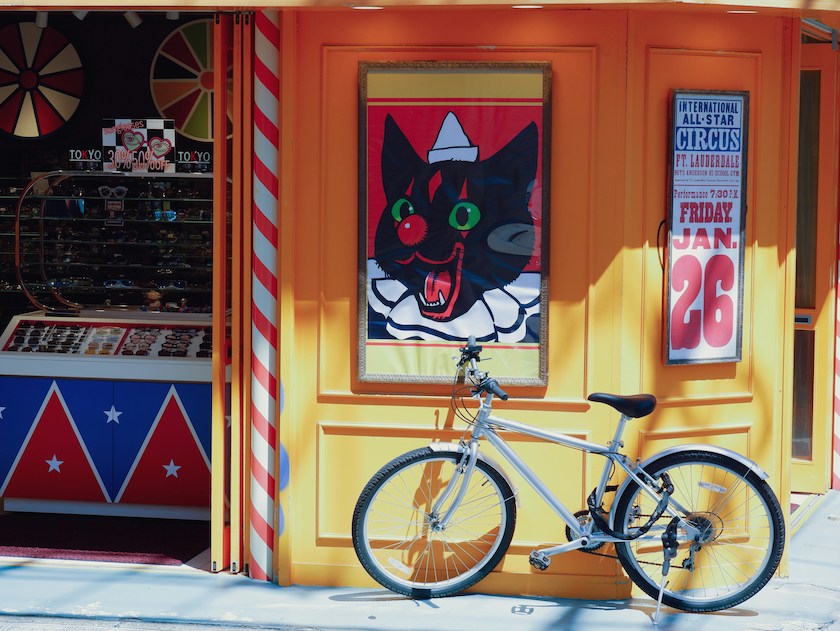
Five of The Coolest Areas of Tokyo
1. Harajuku
The quirky capital of contemporary Japan, Harajuku is world-famous for its teenage street fashion, cute ‘kawaii’ style food and shopping, cosplay culture. It’s much more than a place, it’s an entire culture. From hip-hop Harajuku teens to street-style fashionistas, Japanese schoolgirls to pink-haired princesses, this famous district is the place to go to experience contemporary Japan’s creative, theatrical, and sometimes outrageous youth culture and unique street fashions. A visit to Tokyo – one of the world’s biggest and greatest cities – just wouldn’t be the same without walking along Harajuku’s famous Takeshita Dori (street) – the spiritual home of its world-famous fashion and street style. And it’s not just clothes, but music, food, shopping, accessories and more. Harajuku is vibrant, dazzling, and unforgettable. 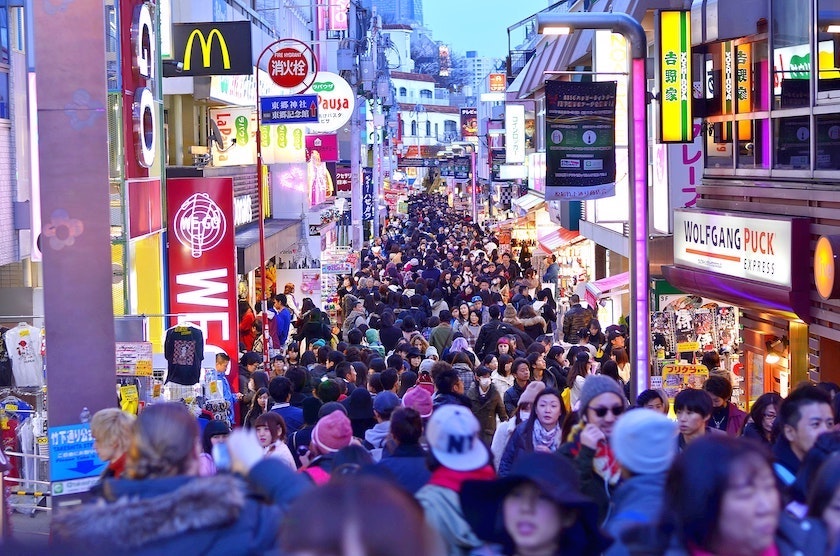
Harajuku is an area of Tokyo between Shinjuku and Shibuya. When people talk about Harajuku they are often referring to Takeshita Dori – a famous shopping street – and its surrounding alleyways. Harajuku and Takeshita Dori exploded onto the world stage as an icon for teenage fashion and culture in the 1980s, but the history of the area dates back much further.
More than an area for teenagers to simply hang around, Harajuku became a vibrant, colourful, and unique space for youth culture, art, dancing, conversation, and of course, street fashion. Teenage dancing groups called takenoko-zoku took to the streets on a regular basis, and increasingly large crowds of young people gathered at the entrance to Yoyogi Park to watch impromptu dance shows and performances by the likes of the Rockabillies and more. During the financial crisis of the 1990s, the outrageous clothes and hairstyles of Japanese teens gathering in Harajuku was seen as a form of rebellion against their traditional culture. The teenage fashions were so wild, experimental, and at the cutting edge of fashion that they soon became world-famous – influencing youth culture worldwide. Naturally, this new young scene attracted a wave of international fashion shops to the area, with brands like Uniqlo, Forever 21 and Gap Inc opening in the Harajuku backstreets of Ura-Harajuku. Takeshita Street in particular was the focal point and spiritual home for this movement and style and remains a hugely popular destination today, not just for the quirky and colourful fashions, but for the shopping, food, culture and unique atmosphere. For all these reasons and more, Harajuku is unmissable.
Harajuku is the area around Harajuku station which sits between Shinjuku and Shibuya. The station can be easily reached using the Yamanote rail line, which is fully covered by the Japan Rail Pass. The JR Yamanote line, or Yamanote loop line, runs in a circle around Tokyo, stopping at important stations like Harajuku, Ikebukuro, Shinjuku, Shibuya & Tokyo stations. Read our comprehensive Guide to Tokyo’s Yamanote Line to find out more. As soon as you step out of the station, you’re essentially in Harajuku and all of the attractions above, including the famous Takeshita Street, are just a short walk away. When you come out of the station just cross the street and turn left for Takeshita Dori. Read our full Travellers Guide to Harajuku for more.
2. Kichijoji
Located in the west of Tokyo and only a 15 minute train journey from Shibuya and Shizuka, Kichijoji is a trendy suburb popular with young people. One of the main attractions is the pretty Inokashira Park, a huge greenspace known for its cherry blossom and swan boats that’s also close to the famous Ghibli Museum from award-winning Japanese animators Studio Ghibli. 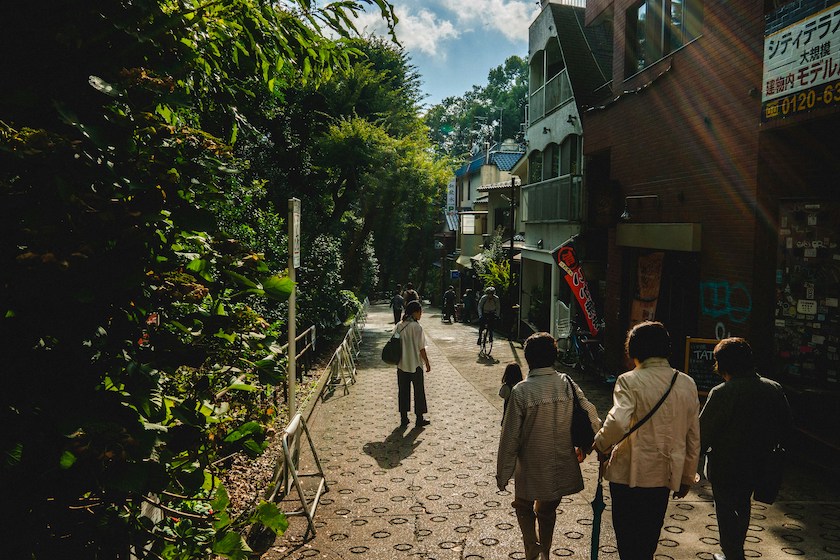
Kichijoji is known for its numerous restaurants, cafes, and shops, and has a reputation for being such a cool area that it’s the part of Tokyo where many young people and visitors would love to live.
3. Shibuya
One of the most iconic places to go in Tokyo is the city-ward Shibuya. Shibuya, Tokyo is famous for a multitude of archetypical urban sights to see including Shibuya Station and Shibuya Crossing. There is also a large draw for youth fashion and culture, with an itinerary list of popular destinations for shopping, entertainment, nightclubs, and world-class dining.
The countless super cool highlights of this dazzling area include the world-famous Shibuya Scramble, Shibuya 109 complex, and Tokyo’s tallest skyscraper Shibuya Sky. Shibuya Crossing is a landmark of Tokyo and Japan, and a regular filming location for movies and media. This highly urban and metropolitan ward is notable for its futuristic look of large mounted TV screens and sky-high neon buildings. The densely populated yet fluid motion of pedestrians and vehicles navigating Shibuya Crossing’s 10 lanes of traffic and five major crosswalks in one intersection, is fed by Shibuya station — one of the world’s busiest train stations. While visiting Shibuya Crossing can be done at any time of year, the warmer months may hold a greater opportunity to see the variety of urban Tokyo.
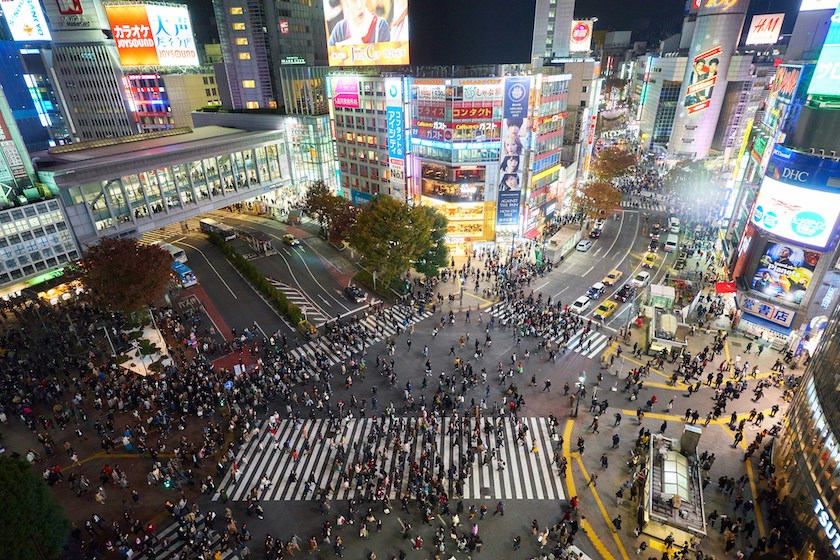
Shibuya 109 is a popular ten-story shopping mall, which is notorious in the fashion community, especially for its influence as a haven for young women in the “gyaru” subculture in the early 2000s. The iconic mall is built as a large cylinder, with an obvious and massive sign on the front stating “109,” visible from Hachiko Square and in easy access to Shibuya Station. With ten floors of shopping dedicated mostly to young women interested in the latest Japanese fashion, and a variety of restaurants, it is easy to feel lost and lose track of time immersed in the shopping experience of one of the largest department stores in Shibuya, Tokyo.
Finally, Shibuya Sky - at a height of 230 metres - has two floors dedicated to observation, known as the “Shibuya Sky.” The 45th floor, known as the “sky gallery” is an enclosed observation area that hosts cafes, bars, and souvenir shops. Artistic video installations with accompanying sound offer a sense of modern Shibuya while enjoying the view. The 46th floor, known as the “sky stage” is an outdoor rooftop observatory that has an area of 2,500 square metres and includes a helipad, lounging area, and multiple spots for photo opportunities with great views of Tokyo Tower, Tokyo Skytree, the whole Shibuya district, and on a clear day, Mt Fuji. And these are just three of the cool highlights!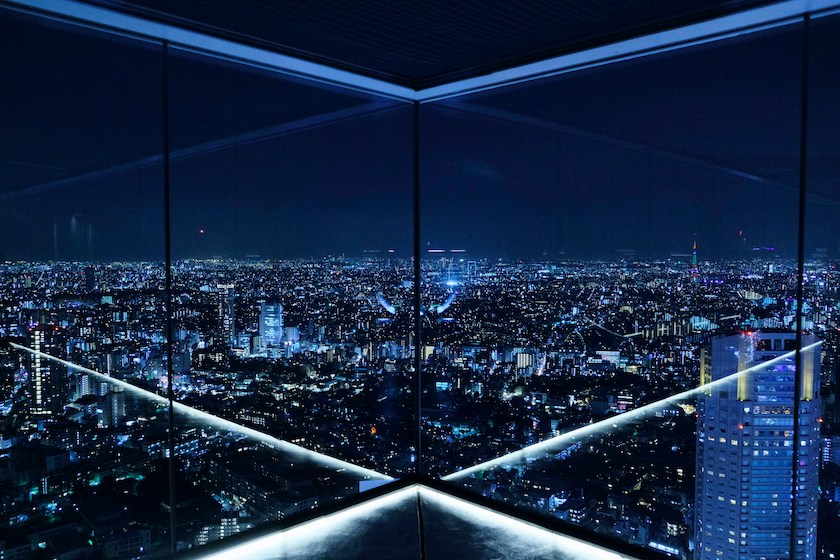
When visiting Shibuya, be sure to also check out Shibuya Station, a complex and transportation hub where a variety of railway and subway lines come together. This includes the Japan Rail Shibuya Station, a station that connects the high-speed trains available to those with the Japan Rail Pass, has eight floors of shopping as well as dining, and is next to the Shibuya Mark City mall, with six floors of restaurants and shops. Our Ultimate Guide to Shibuya can tell you more.
4. Shimokita
Shimokita (full name Shimokitazawa) was officially voted one of the world’s Top 10 Coolest Neighbourhoods in 2022 so it definitely has to make the list! With vintage shops, quirky cafes and restaurants, and a thriving literary, music, and independent arts scene, Shimokitazawa is a hidden gem where more and more of Japan’s cool younger crowd are gravitating. In the last two years, the area has become even more of a go-to destination thanks to the addition of a five-storey restaurant and shopping complex under the elevated tracks of Shimokitazawa Station.

In the aftermath of World War II, the district’s shops took on a new life as a bustling second-hand market for US soldiers. This entrepreneurial, second-hand spirit remains today (as well as some of the old market buildings) in Shimokitazawa’s thriving vintage clothing and independent shopping scene today. It was during the 1970s however that the district took on the personality that it is now known for - thanks in part to that decade’s hippy youth who migrated to Shimokitazawa and helped transform it into the hipster heaven that it is today. Shimokitazawa, which is also known colloquially as Shimokita, is famous for its narrow, criss-crossing alleyways filled with vintage shops, cafes, music venues, independent cinemas and theatres. Its close-knit, laid-back, community feel makes it unique among Japan’s many districts and well worth a visit.
Shimokitazawa can be found to the west of Shibuya. You’ll find Shimokitazawa on the Odakyu Line and Keio-Inokashira Line. Shimokitazawa Station is just seven minutes from Shinjuku Station - the world’s biggest and busiest train station - via the Odakyu line. From Tokyo station, first take the JR Chuo Line Rapid before getting on the Odakyu line to Shinjuku. Check out our Guide to Shimokitazawa & Shimokitazawa Station for the full story.
5. Shinjuku
Vibrant and lively, Shinjuku is considered one of the must-see areas of Tokyo and also boasts the world’s busiest railway station with more than 3.5 million passengers each and every day. From glowing neon to lively nightlife, world-famous restaurants to the city’s biggest red light district, Shinjuku has a bit of everything, and is known as a vibrant, bustling entertainment hub. Highlights and landmarks include Golden Gai, the Robot Restaurant, the beautiful Shinjuku Gyoen park, the Samurai museum, the aforementioned Kabukicho red light district, countless ramen restaurants and Izakaya, and much more. It’s also one of Tokyo’s biggest shopping districts. In other words, there’s a lot to see and do in Shinjuku. It’s no wonder it’s perennially considered one of Tokyo’s coolest areas.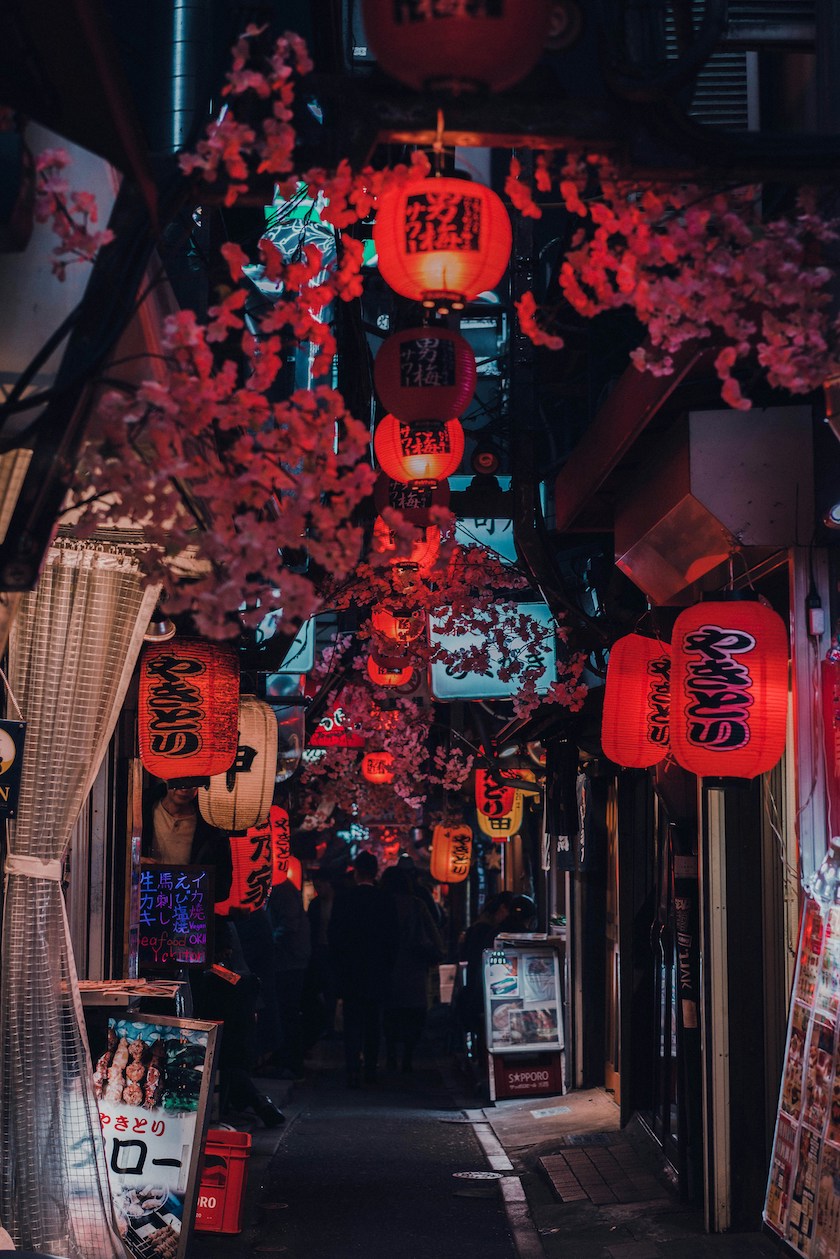
While the history of Shinjuku as a cool destination dates back to the opening of its famous train station in 1885 - now the busiest in the whole world - the area’s modern day history really begins after the Second World War. As kabuki and movie theatres began to open, adding entertainment to the mix alongside shopping, a nightlife culture also emerged with the red-light district of Kabukicho and the quirky drinking establishments of Golden Gai. In the late 1950s and 1960s, the area’s bars became popular among writers, artists and intellectuals. After this, Shinjuku transformed again with the addition of skyscrapers and high-rises, including the impressive Tokyo Metropolitan Government Building designed by Kenzo Tange, and a number of department stores in the area west of the station. Thus, Shinjuku became a unique melting pot of old and new and one of Tokyo’s busiest, most vibrant areas, as famous for its nightlife as its shopping and entertainment. From the legendary nightlife of the Golden Gai to the colourful craziness of the Robot Restaurant and more, Shinjuku is truly a super cool neighbourhood - and then some!
As the busiest railway station in the world, Shinjuku is connected to almost everywhere - about a dozen different railway lines to be exact, including the JR Yamanote Line - and is very easy to get to. Use the orange trains on the JR Chuo Line from Tokyo Station, which takes 15 minutes, or the JR Yamanote Line from Ueno Station, which takes around 25 minutes. Shinjuku is accessible via all the JR lines, making it ideal for anyone with a Japan Rail Pass.
Bonus Recommendations
As one of the coolest cities in the world, Tokyo has a head-spinning amount to see and do. Here are a few additional tips and recommendations:
- Our guide to 48 Hours in Tokyo is a great place to start for a fast-paced tour of the best activities and attractions while in this incredible metropolis.
- Once in Tokyo, the easiest way to get around the city is using public transportation, so you’ll want to invest in a prepaid travel card such as an ICOCA, PASMO or Suica card, as well as a Japan Rail Pass for getting around the rest of the country. Check out our Top 30 Tips for Using Japan’s Metros for advice and guidance on using the city’s subway network.
- Tokyo is BIG!! As such, it’s a smart idea to invest in PocketWifi to stay connected and avoid any unwanted data charges if you happen to need directions or language advice while you’re on the move during your 48 hours in the city.
